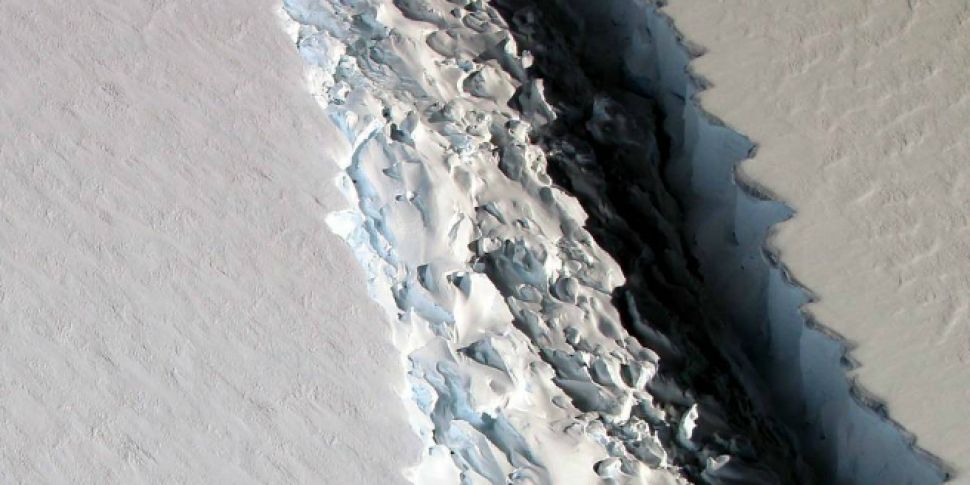A massive iceberg, expected to be one of the largest ever recorded is poised to break away from Antarctica.
Scientists from the UK’s Project Midas said the Larsen C Ice shelf in Antarctica is primed to shed an area of more than 5,000 square km - around the same size as the Caribbean island state of Trinidad and Tobago.
Project MIDAS is a UK-based Antarctic research project, investigating the effects of a warming climate on West Antarctica.
A rift slowly developing across the shelf on the Antarctic Peninsula over recent years expanded abruptly last month, growing by about 18 km.
Scientists said the rift is now more than 80 km long with just 20 km left before it snaps.
“Only a final 20 km of ice now connects an iceberg one quarter the size of Wales to its parent ice shelf,” the scientists said in a statement.
When it breaks away the ice shelf will lose more than 10% of its area to leave the ice front at its “most retreated position ever recorded.”
“This event will fundamentally change the landscape of the Antarctic Peninsula,” reads the statement.
The scientists said the remaining shelf will be less stable than it was prior to the rift and said it may “follow the example of its neighbour Larsen B which disintegrated in 2002 following a similar rift-induced calving event.”
Almost the entire Larsen B Ice Shelf splintered and collapsed in just over one month during the Southern Hemisphere summer of 2002.
According to NASA, scientists had never witnessed such a large area of ice - 3,250 square km - disintegrate so rapidly.
The northernmost section of the Larsen Ice Shelf Complex - called Larsen A - lost about 1,500 square km of ice in an abrupt event in January 1995.
Ice shelves are areas of ice floating on the sea, several hundred meters thick, at the end of glaciers.
Scientists fear the loss of ice shelves around Antarctica will allow glaciers inland to slide faster towards the sea as temperatures rise as a result of global warming - raising world sea levels.
However, the team moved to calm fears online saying there is "no need for alarm."
There’s no need for alarm! This is a fairly normal event, although it is spectacular and quite rare https://t.co/xwKOOKLicD
— Project MIDAS (@MIDASOnIce) January 6, 2017
At over 5,000 square km the break-away is set to be one of the largest ice-berg calving events ever recorded.









